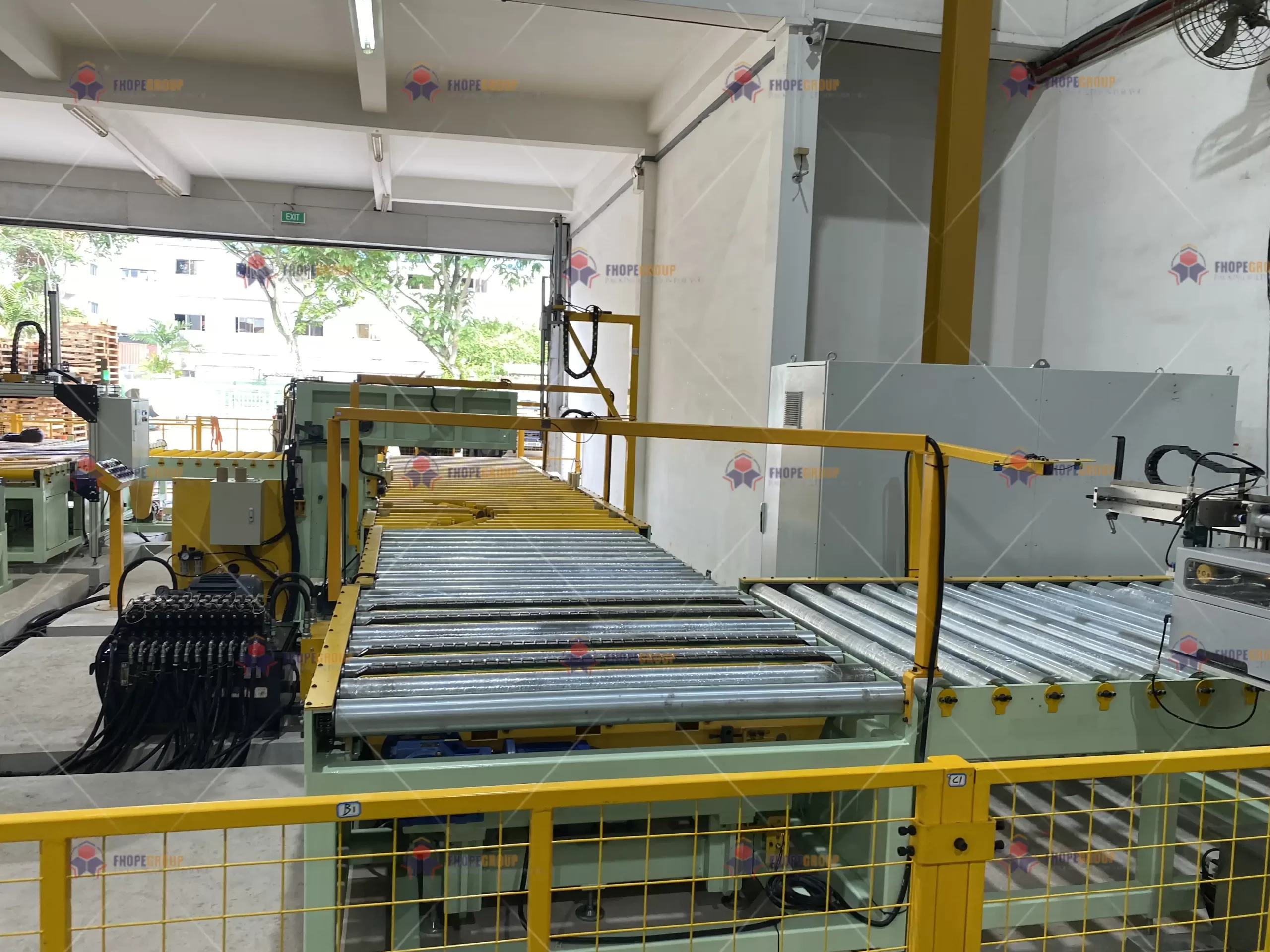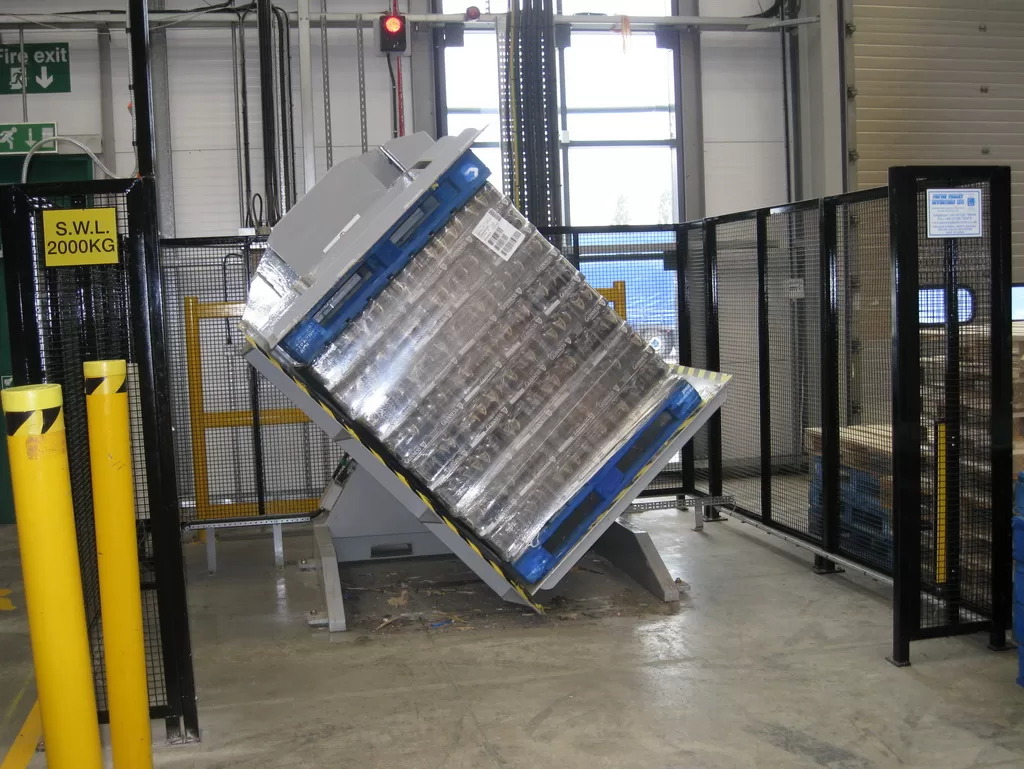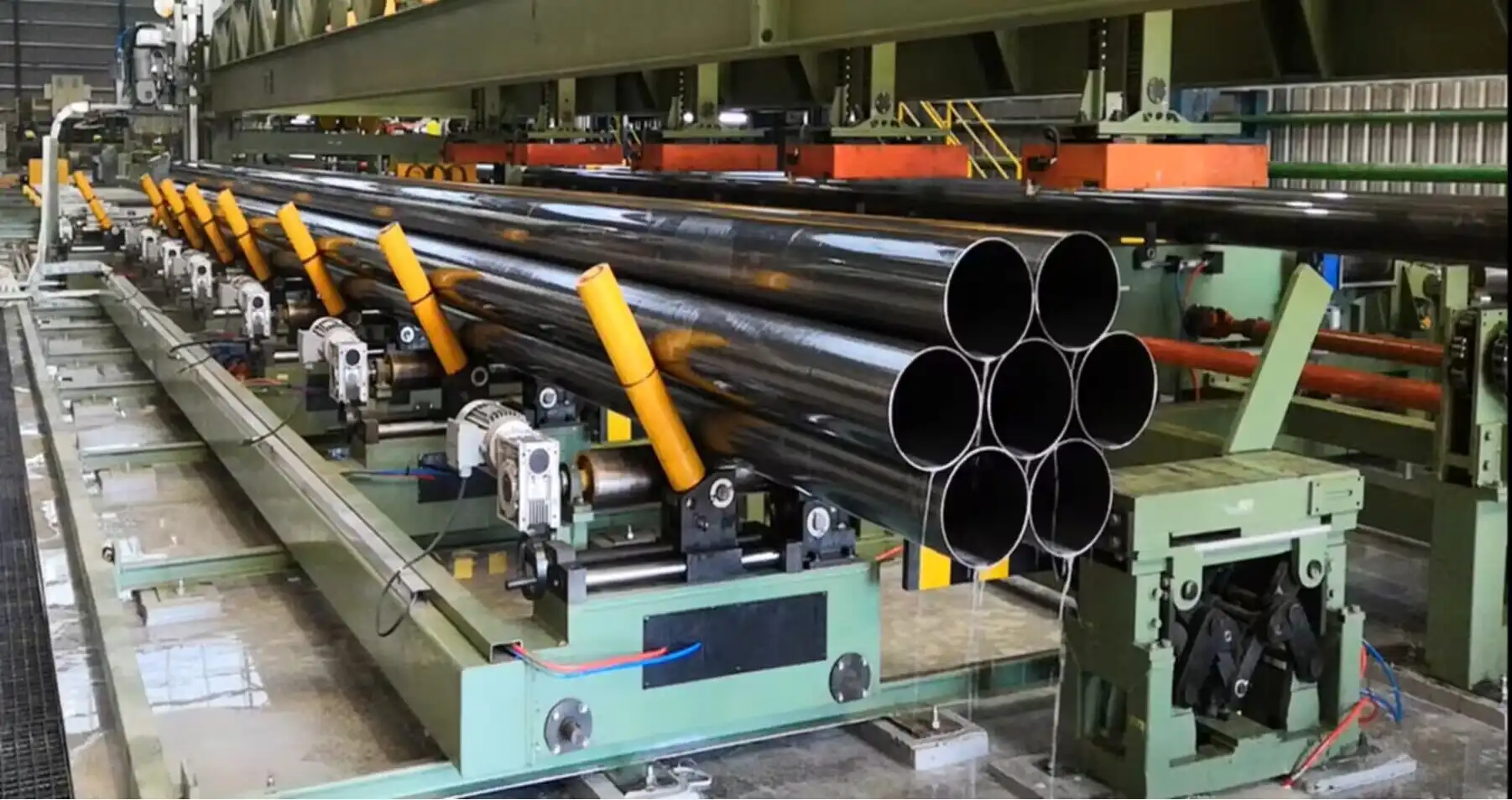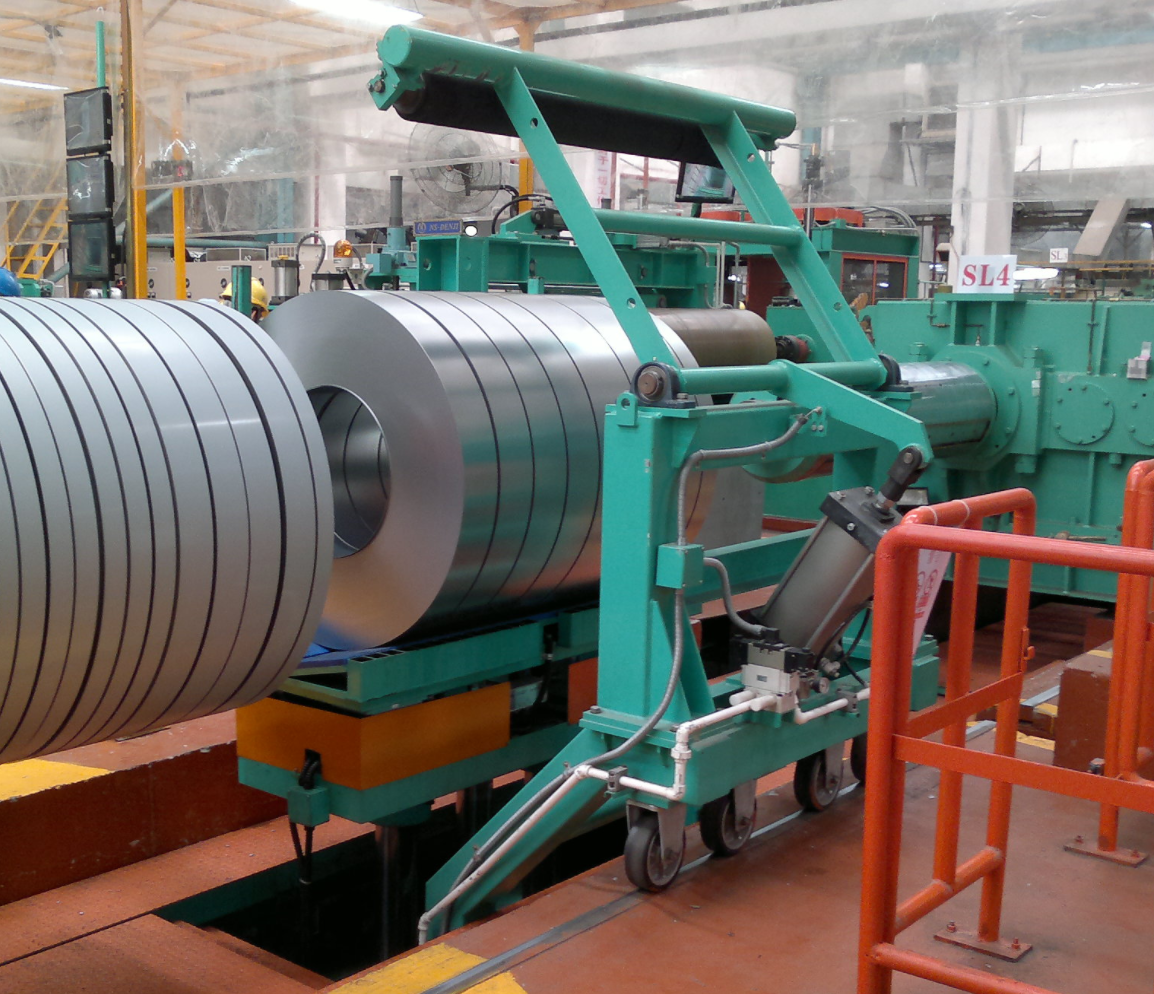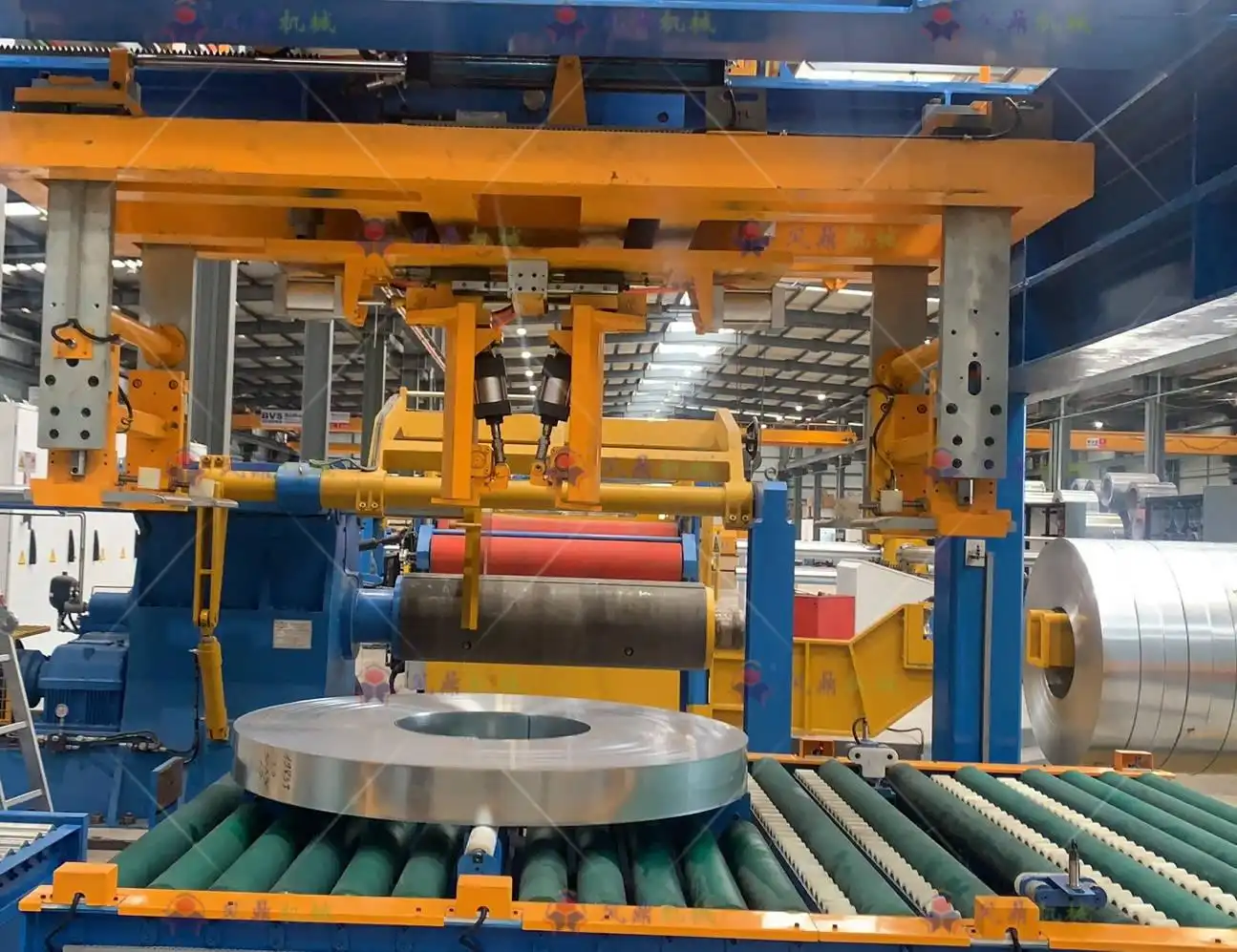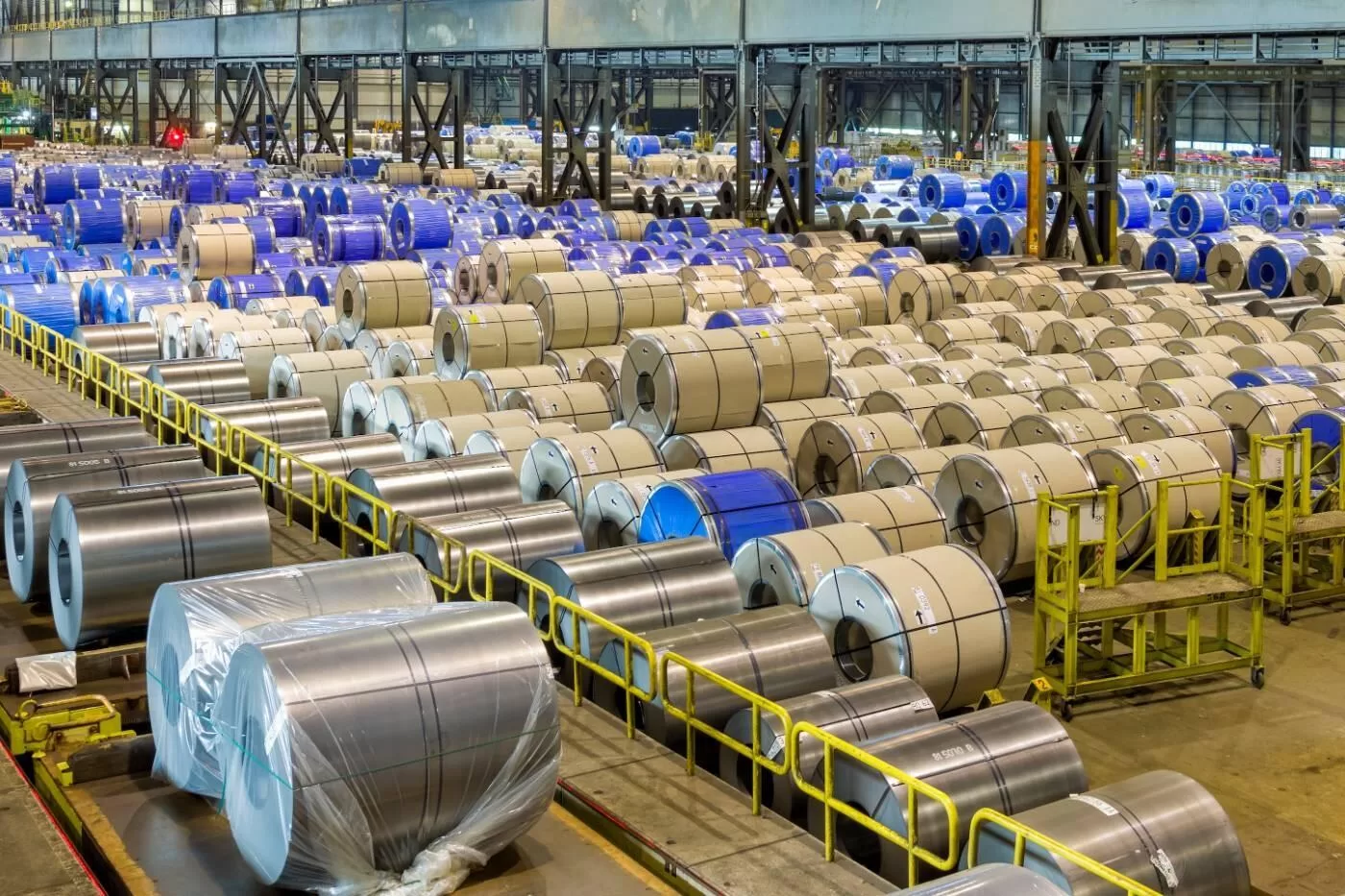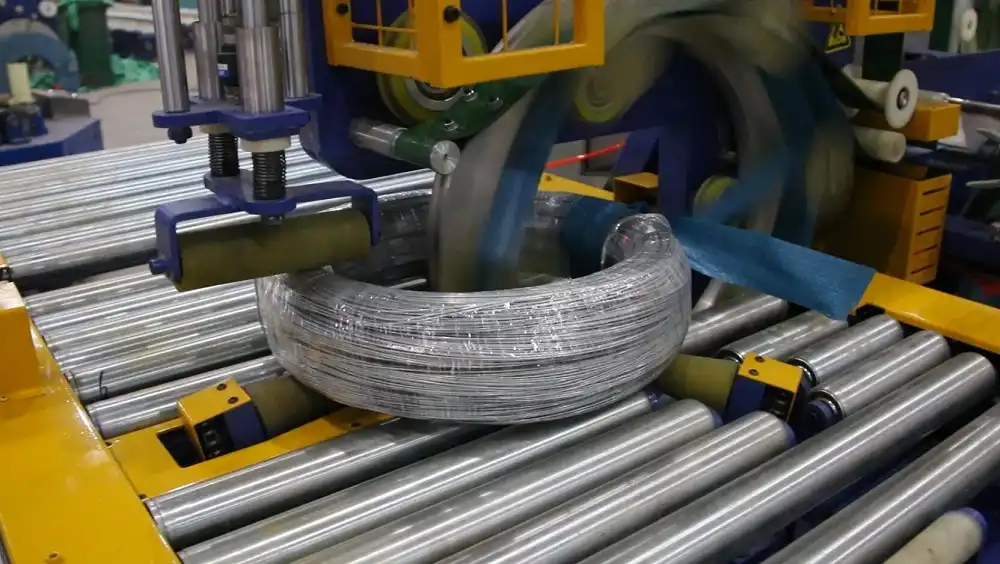Efficient warehouse storage of steel coils is crucial for maintaining material integrity and optimizing space. Proper storage prevents damage, ensures safety, and facilitates easy retrieval, directly impacting operational efficiency and cost-effectiveness. This guide explores the best practices for steel coil warehouse storage.
To store steel coils effectively in warehouses, utilize vertical space with racking systems, implement proper inventory management for traceability, and maintain environmental controls to prevent corrosion. Employ specialized handling equipment and ensure personnel are trained in safe coil handling and storage procedures to maximize space and safety.
Storing steel coils requires careful planning and execution. This article will delve into the essential strategies and techniques for optimizing your warehouse for steel coil storage, ensuring both safety and efficiency. Read on to discover how to transform your warehouse into a model of organization and productivity.

Optimizing Space for Steel Coil Storage
Effective space optimization is paramount in warehouses storing steel coils. Maximizing storage density not only reduces the storage footprint but also streamlines material handling processes, leading to significant operational cost savings and improved efficiency.
To optimize space for steel coil storage, implement vertical racking systems specifically designed for coils, utilize a narrow aisle layout to increase storage density, and employ a warehouse management system (WMS) to track coil locations and optimize space utilization. Regularly assess and adjust storage configurations to adapt to changing inventory levels and product mixes.
Optimizing space is not just about fitting more coils into your warehouse; it’s about creating a smart, organized system that enhances workflow and safety. Let’s explore the critical elements of space optimization in steel coil [Warehouse storage] in more detail, examining how different strategies can be combined to achieve maximum efficiency.
Vertical Storage Solutions for Steel Coils
Vertical space is often underutilized in warehouses. For steel coils, vertical racking systems are particularly effective for maximizing storage density. These systems come in various forms, each suited to different coil sizes, weights, and warehouse layouts.
Types of Vertical Racking Systems for Steel Coils
| Racking System | Description | Advantages | Disadvantages | Ideal For |
|---|---|---|---|---|
| Vertical Coil Racks | Specifically designed racks that hold coils in a vertical orientation. | Maximum density, excellent for uniform coil sizes, improved space utilization. | Requires specialized lifting equipment, access to individual coils can be limited. | High-volume storage of similar-sized coils, warehouses with high ceilings. |
| Horizontal Coil Racks | Racks that store coils horizontally, often in cradles or saddles. | Easier access to individual coils, less specialized lifting equipment needed, good for varied coil sizes. | Lower density compared to vertical racks, requires more floor space. | Warehouses with diverse coil sizes, operations needing frequent coil access. |
| Adjustable Racking | Racking systems with adjustable beams to accommodate different coil heights. | Flexibility for varying coil sizes, adaptable to changing inventory needs, can be reconfigured as needed. | Can be more complex to manage, may not achieve the highest density for uniform coils. | Warehouses with fluctuating inventory, businesses storing a wide range of coils. |
Choosing the right vertical storage solution depends on your specific needs. Vertical coil racks maximize density for uniform coils, while horizontal racks offer better accessibility for diverse sizes. Adjustable racking provides flexibility for changing inventory. A careful analysis of your inventory and operational needs will guide you in selecting the most effective system.
Narrow Aisle Configuration
Narrowing aisle widths is another potent strategy for space optimization. By reducing the space dedicated to forklift traffic, you can significantly increase the area available for storage racks. However, this approach requires careful consideration of material handling equipment and safety protocols.
Benefits and Considerations of Narrow Aisles
| Benefit | Description | Consideration | Mitigation Strategy |
|---|---|---|---|
| Increased Storage Density | Narrower aisles directly translate to more space for racks and coils, maximizing the use of warehouse floor area. | Requires specialized narrow-aisle forklifts, which may have higher upfront costs and require skilled operators. | Invest in narrow-aisle forklifts and provide thorough operator training to ensure safe and efficient operation. |
| Reduced Travel Distance | Shorter distances between storage locations can speed up retrieval times and improve overall workflow efficiency. | Limited maneuverability for standard forklifts, potentially slowing down material handling if not properly managed. | Optimize layout for efficient flow, use reach trucks or articulated forklifts designed for narrow spaces. |
| Improved Space Utilization | Overall, narrow aisles contribute to a more efficient use of the total warehouse volume, both horizontally and vertically. | Safety concerns increase in confined spaces, requiring strict adherence to safety protocols and equipment. | Implement strict safety protocols, use visual aids like floor markings, and ensure adequate lighting and visibility. |
Implementing narrow aisles can dramatically increase storage capacity, but it’s crucial to balance space gains with operational needs and safety. Proper planning, the right equipment, and rigorous safety training are essential for successful narrow aisle implementation.

Warehouse Management Systems (WMS) for Space Optimization
A Warehouse Management System (WMS) is indispensable for optimizing space utilization. A WMS provides real-time visibility into inventory, tracks coil locations, and optimizes storage strategies, ensuring that every cubic foot of your warehouse is used effectively.
How WMS Enhances Space Optimization
- Real-time Inventory Tracking: WMS provides accurate, up-to-the-minute data on coil inventory levels and locations. This prevents overstocking in certain areas and underutilization in others, ensuring balanced space usage.
- Optimized Put-away Strategies: WMS directs put-away processes, assigning optimal storage locations based on factors like coil size, weight, and accessibility needs. This minimizes wasted space and reduces put-away time.
- Directed Picking and Retrieval: By knowing the precise location of each coil, WMS streamlines picking and retrieval processes. This reduces search times and ensures efficient material flow, further optimizing space indirectly by improving throughput.
- Space Utilization Analytics: WMS offers analytics on space utilization, highlighting underutilized areas and potential bottlenecks. This data-driven insight allows warehouse managers to make informed decisions about layout adjustments and storage strategies.
Implementing a WMS is a strategic investment that pays off in enhanced space utilization, improved inventory accuracy, and streamlined operations. It transforms warehouse management from reactive to proactive, ensuring continuous optimization of your storage space.
Ensuring Safe Handling of Steel Coils
Safety is paramount when handling heavy and unwieldy steel coils. Warehouses must implement stringent safety protocols and utilize appropriate equipment to prevent accidents and injuries during coil handling and storage.
To ensure safe handling of steel coils, implement comprehensive safety training programs for all personnel, use specialized coil handling equipment like C-hooks and coil rams, and establish clear safety zones and traffic routes within the warehouse. Regularly inspect equipment and storage areas to maintain a safe working environment.
Safe coil handling is not just about preventing accidents; it’s about creating a culture of safety that protects your employees and ensures operational continuity. Let’s examine the key aspects of safe steel coil handling in detail.
Specialized Coil Handling Equipment
Using the right equipment is crucial for safe and efficient coil handling. Specialized equipment is designed to securely grip and maneuver coils, minimizing the risk of drops, rolls, and other accidents.
Essential Equipment for Safe Coil Handling
- Coil Rams: Forklift attachments designed to fit into the eye of a coil for lifting and transporting. They provide secure horizontal lifting but require coils to be stored with the eye horizontal.
- C-Hooks: Overhead lifting devices shaped like a "C" that hook around the outer diameter of a coil for vertical lifting. Ideal for maximizing vertical storage and accessing coils in tight spaces.
- Coil Grabs: Mechanical or hydraulic grabs that clamp onto the outer diameter of coils. Versatile for both vertical and horizontal lifting, offering a secure grip for various coil sizes.
- Pallet Jacks with Coil Saddles: Specialized pallet jacks equipped with curved saddles to cradle coils during short movements on the warehouse floor. Useful for maneuvering coils in tight spaces and positioning them for lifting.
Investing in and properly maintaining specialized coil handling equipment is essential for safety. Regular inspections and operator training are equally important to ensure equipment is used correctly and safely.
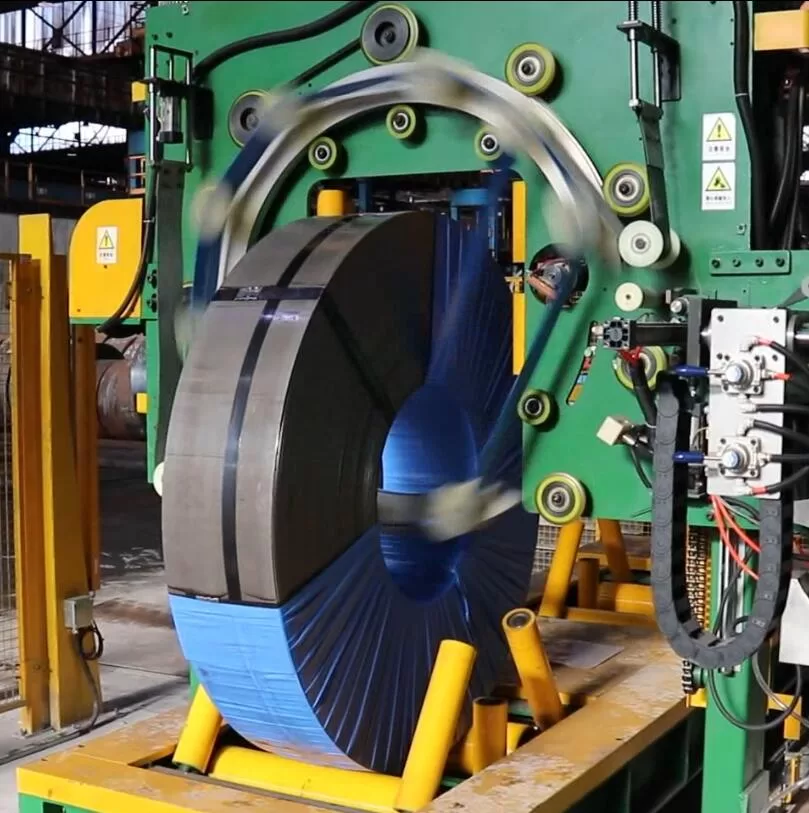
Safety Training and Procedures
Comprehensive safety training is the cornerstone of safe coil handling. All personnel involved in handling steel coils must be thoroughly trained in safe operating procedures, equipment usage, and emergency response.
Key Elements of Safety Training Programs
- Equipment Operation Training: Hands-on training on the safe operation of all coil handling equipment, including pre-shift inspections, proper lifting techniques, and emergency stop procedures.
- Safe Coil Handling Procedures: Training on best practices for lifting, moving, and storing coils, including weight limits, load balancing, and securing coils during transport.
- Warehouse Traffic Management: Instruction on warehouse traffic rules, designated pedestrian walkways, forklift operating zones, and procedures for avoiding collisions.
- Emergency Response Training: Training on emergency procedures, including first aid, spill response (if applicable), and evacuation plans, ensuring personnel are prepared for unforeseen events.
- Regular Safety Audits: Periodic safety audits to identify potential hazards, reinforce safe practices, and ensure compliance with safety regulations.
Effective safety training is an ongoing process. Regular refreshers, safety meetings, and continuous reinforcement of safe practices are crucial for maintaining a safety-conscious warehouse environment.
Establishing Safety Zones and Traffic Routes
Clearly defined safety zones and traffic routes are essential for minimizing the risk of accidents. Designating specific areas for coil handling, storage, and forklift operation, and separating pedestrian and equipment traffic flows, enhances safety significantly.
Implementing Effective Safety Zones and Routes
- Designated Coil Handling Areas: Clearly mark areas for loading, unloading, and staging coils, ensuring sufficient space for maneuvering equipment and avoiding congestion.
- Separate Pedestrian Walkways: Establish designated walkways for pedestrians, physically separated from forklift traffic lanes using barriers, railings, or floor markings.
- Forklift Traffic Lanes: Clearly mark forklift traffic lanes with floor striping and signage, ensuring adequate width for safe maneuvering and two-way traffic where necessary.
- Safety Signage and Visual Aids: Use prominent safety signage, including warning signs, speed limits, and directional indicators, to reinforce safety rules and guide traffic flow.
- Regular Review and Adjustment: Periodically review and adjust safety zones and traffic routes based on operational changes, incident reports, and safety audit findings to maintain effectiveness.
Well-defined safety zones and traffic routes create a structured and predictable warehouse environment, significantly reducing the potential for accidents and promoting a culture of safety.
Maintaining Steel Coil Quality During Storage
Maintaining the quality of steel coils during warehouse storage is critical. Environmental factors like humidity and temperature fluctuations can lead to corrosion and degradation, compromising the integrity and value of the steel.
To maintain steel coil quality during storage, implement environmental controls to regulate temperature and humidity, apply protective coatings or wraps to coils, and conduct regular inspections for signs of corrosion or damage. Proper inventory management practices, including FIFO (First-In, First-Out), also help prevent prolonged storage and potential quality degradation.
Preserving steel coil quality is not just about preventing rust; it’s about ensuring that the material remains in prime condition, ready for its intended application. Let’s examine the key strategies for maintaining steel coil quality during storage.
Environmental Controls: Temperature and Humidity
Controlling temperature and humidity within the warehouse is crucial for preventing corrosion. Steel is susceptible to rust, especially in humid environments or where temperature fluctuations cause condensation.
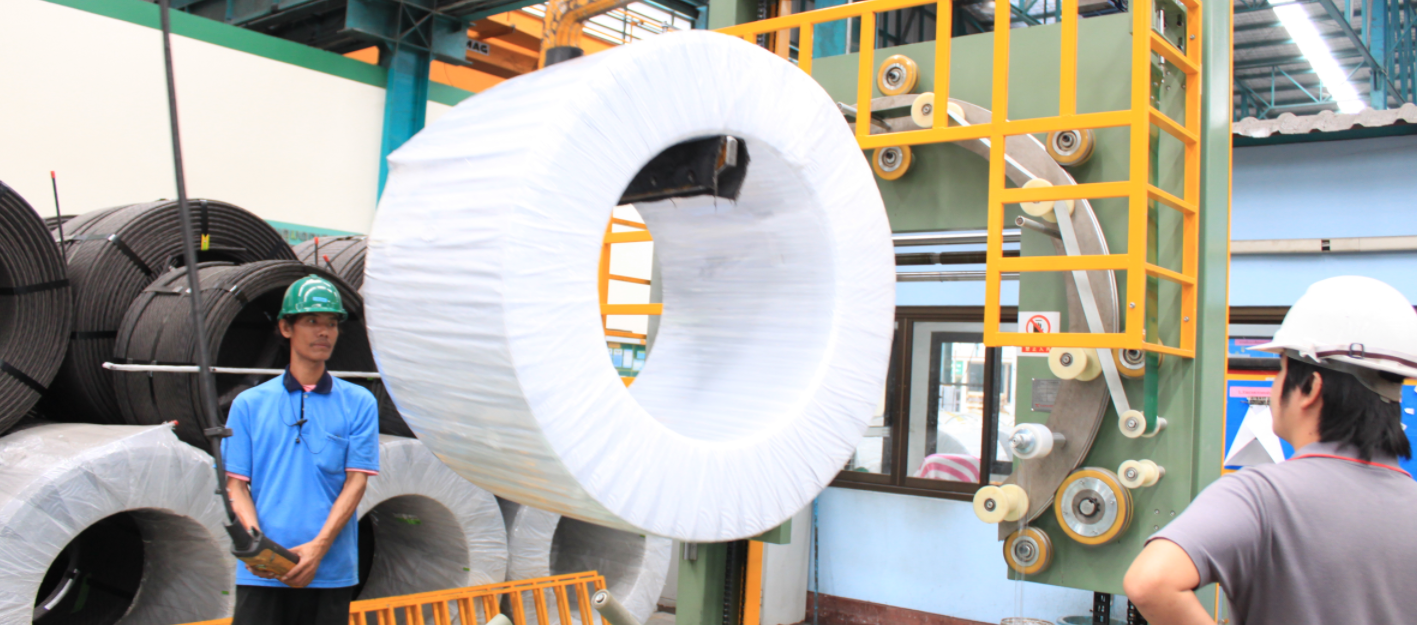
Effective Environmental Control Measures
- Humidity Control: Implement dehumidification systems to maintain relative humidity levels below 50%, ideally between 30% and 40%. This significantly reduces the risk of condensation and rust formation.
- Temperature Regulation: Maintain a stable temperature range within the warehouse, minimizing temperature fluctuations that can lead to condensation. Insulation and climate control systems are essential.
- Ventilation: Ensure adequate ventilation to circulate air and prevent moisture buildup, especially in enclosed storage areas. Proper ventilation helps maintain consistent temperature and humidity levels.
- Monitoring Systems: Install environmental monitoring systems to continuously track temperature and humidity levels. Alarms should be set to alert personnel to deviations from optimal ranges, allowing for timely corrective action.
- Regular Inspections: Conduct routine inspections for signs of condensation, moisture buildup, or rust formation, especially in areas prone to temperature fluctuations or humidity ingress.
Effective environmental controls are a proactive measure to protect your steel coil inventory from corrosion. Consistent monitoring and maintenance of these systems are vital for long-term quality preservation.
Protective Coatings and Wraps
Applying protective coatings and wraps to steel coils provides an additional layer of defense against corrosion and physical damage. These barriers shield the steel from moisture, contaminants, and abrasions during storage and handling.
Types of Protective Measures
- Rust Inhibitors: Apply rust-inhibiting oils or coatings to the steel surface before storage. These create a protective film that prevents moisture and oxygen from reaching the metal, significantly reducing rust risk.
- Protective Wraps: Wrap coils in protective materials like VCI (Vapor Corrosion Inhibitor) paper or plastic films. VCI materials release corrosion-inhibiting vapors, providing long-term protection, especially in enclosed storage.
- Edge Protection: Use edge protectors made of cardboard, plastic, or metal to prevent damage to coil edges during handling and storage. Edge protection minimizes dents, scratches, and other physical damage.
- Palletizing and Banding: Store coils on pallets to elevate them off the floor, reducing direct contact with moisture and dirt. Secure coils to pallets with steel or plastic banding to prevent shifting and damage during movement.
Choosing the right protective measures depends on storage duration, environmental conditions, and budget. Combining rust inhibitors with protective wraps offers comprehensive protection for extended storage periods or harsh environments.
Inventory Management and FIFO Practices
Effective inventory management practices, particularly FIFO (First-In, First-Out), play a crucial role in maintaining steel coil quality. FIFO ensures that older coils are used first, minimizing the risk of prolonged storage and potential quality degradation.
Implementing FIFO for Steel Coils
- Strict FIFO System: Implement a strict FIFO system for coil retrieval, ensuring that the oldest coils are always picked first. This prevents coils from sitting in storage for extended periods.
- Date Coding and Tracking: Clearly date code each coil upon arrival and use a WMS to track storage duration. This enables easy identification of the oldest stock and facilitates FIFO compliance.
- Regular Stock Rotation: Regularly rotate stock, moving older coils to more accessible locations and ensuring newer coils are placed behind them. This physical rotation reinforces FIFO principles.
- Minimize Storage Time: Optimize inventory levels to minimize storage time. Accurate demand forecasting and just-in-time inventory strategies can reduce the need for long-term coil storage.
- Quality Inspections: Conduct regular quality inspections, especially for coils nearing their recommended storage duration limit. Identify and address any signs of corrosion or degradation promptly.
FIFO is not just an inventory management technique; it’s a quality control measure that safeguards your steel coil inventory from potential degradation due to prolonged storage. Consistent application of FIFO principles is essential for maintaining coil quality and minimizing waste.
Conclusion
Optimizing warehouse storage for steel coils is a multifaceted endeavor that requires a holistic approach. By focusing on space optimization, safety, and quality maintenance, warehouses can achieve significant improvements in efficiency, safety, and cost-effectiveness. Implementing vertical storage solutions, ensuring safe handling practices, and maintaining environmental controls are key to maximizing warehouse potential and safeguarding valuable steel coil inventory. Embracing these best practices will transform your steel coil warehouse into a streamlined, safe, and quality-focused operation, ready to meet the demands of today’s competitive market.


